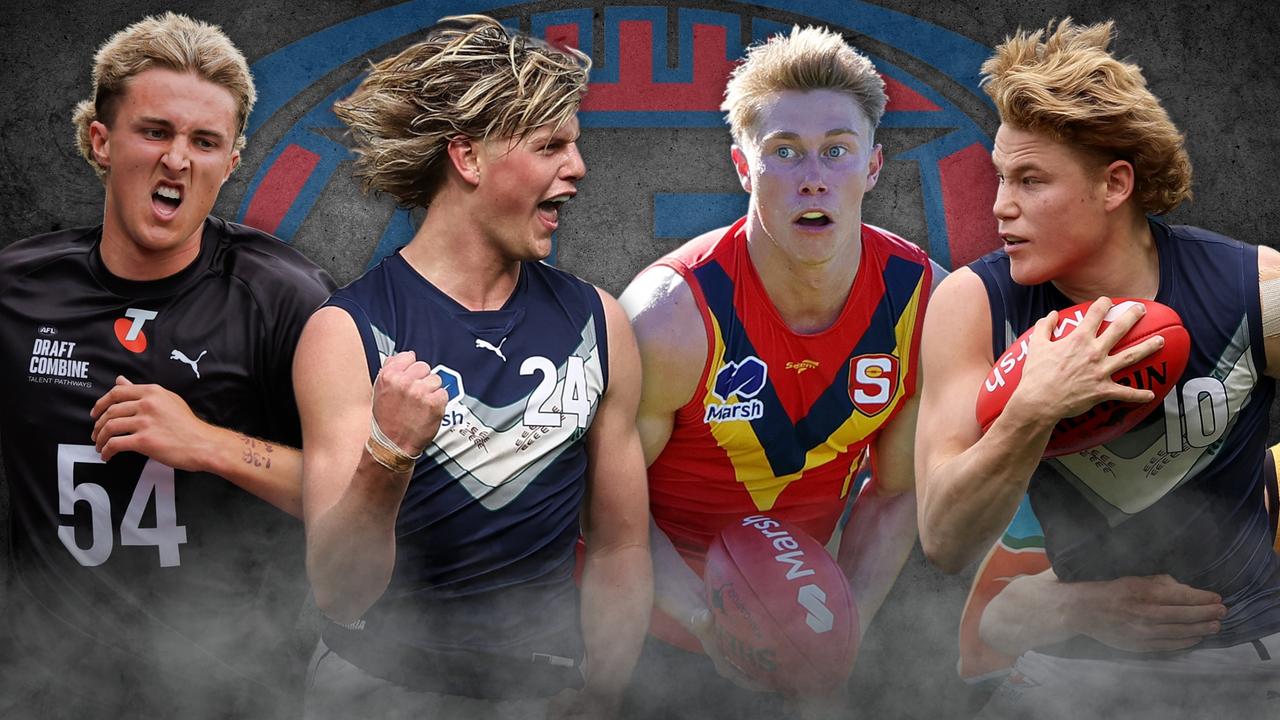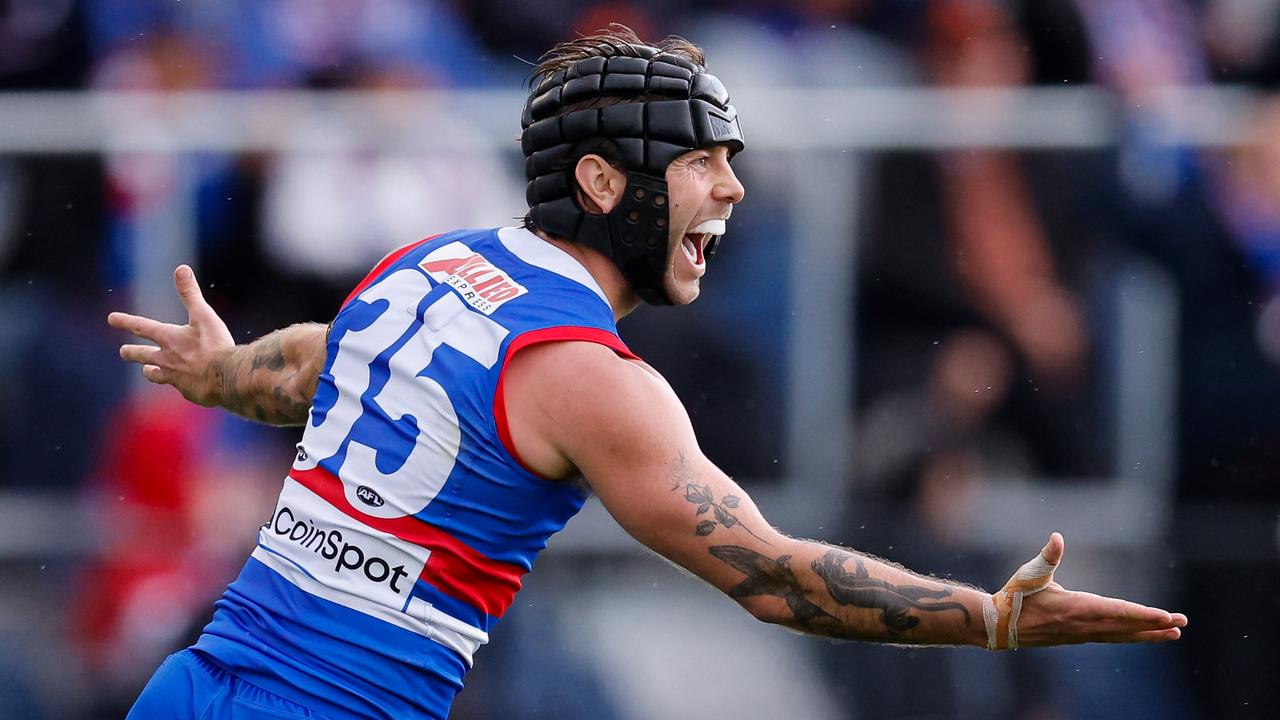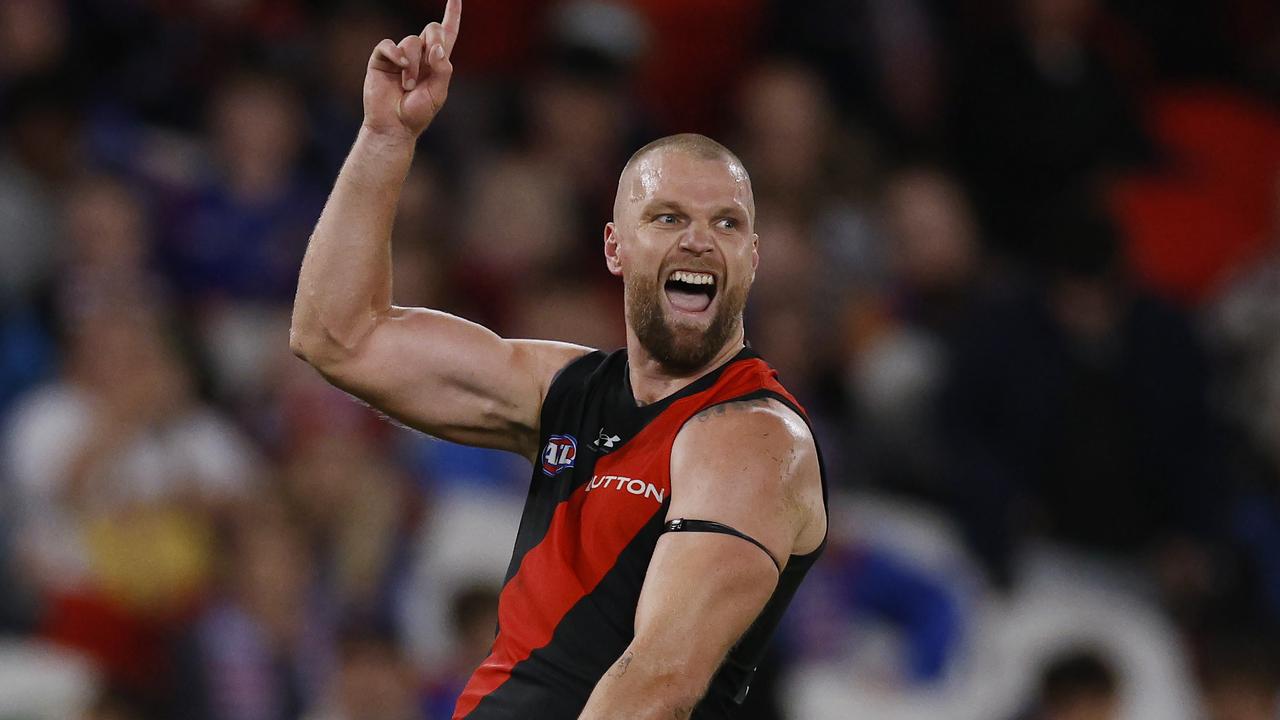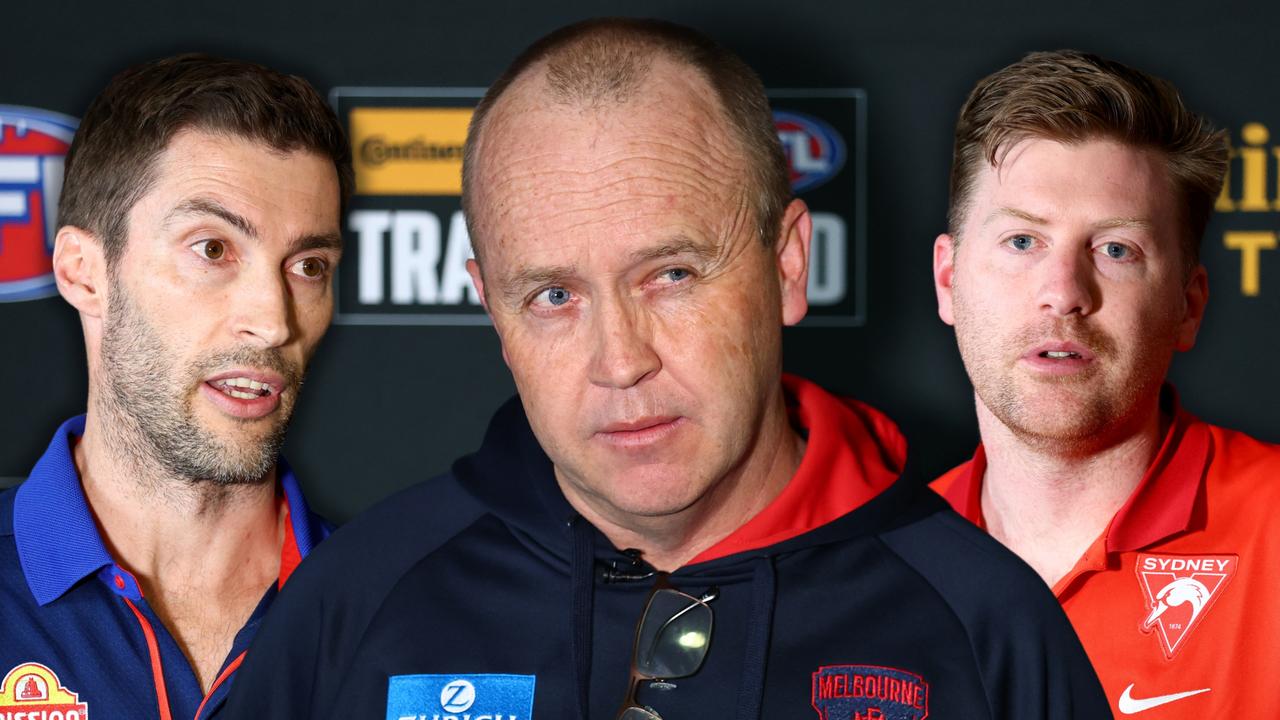AFL Cap Space: Inside GWS’ salary cap disaster and why Harry Himmelberg’s decision is crucial
The Giants are the puppies the league bought for Christmas and no longer take for a walk. And an uncontracted star underlines the doom cycle the club is stuck in.
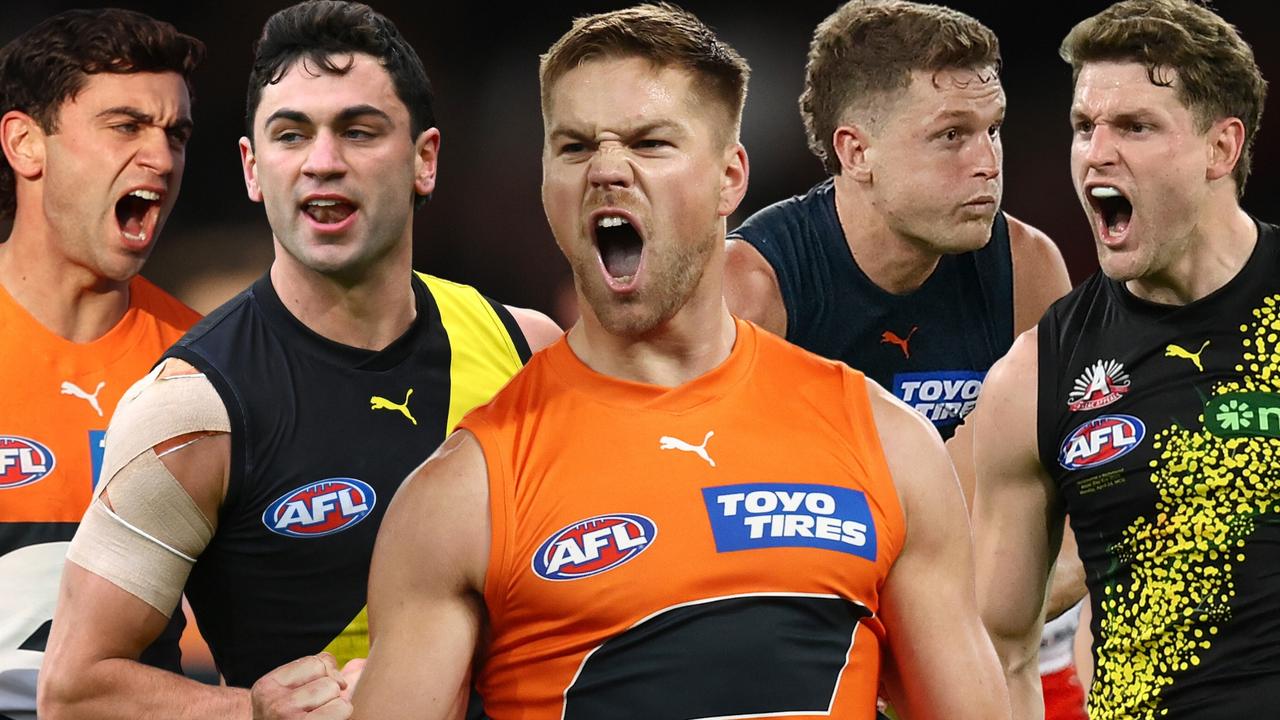
AFL
Don't miss out on the headlines from AFL. Followed categories will be added to My News.
The GWS Giants have to escape the doom loop.
For years, the club has had to overpay its interstate players such as Josh Kelly to stay north as part of a terrible cycle which has blown up the salary cap.
But Harry Himmelberg’s signature might actually be the tipping point.
This is not to pour petrol on the GWS Giants. It’s the opposite.
For a period, GWS was seen as the enemy after its generous start-up concessions and academy rights in conjunction with the controversial Cost of Living Allowance angered rival clubs.
But the pendulum has swung somewhat.
The Giants, and to a wider extent the game in New South Wales, are stuck in the mud.
The nurse has grabbed the needle, tapped the Giants’ arm, and is struggling to find the vein.
And the AFL Commission should be calling the surgeon.
It would be easy to say that to save the Giants from flat-out irrelevance they need the Cost of Living Allowance to be reinstated.
It seemed a poor and overly emotional decision to remove COLA in the first place just because Sydney Swans blindsided the whole competition snaring champion forward Lance Franklin from Hawthorn.
And Victorian teams will keep coming for Tom Green, Finn Callaghan and Aaron Cadman and co in the same way they made the Giants pay ridiculous money to keep Kelly, Stephen Coniglio and Lachie Whitfield etc.

In their defence, houses are about 30 per cent more expensive in Sydney than in Melbourne, based on the latest figures.
But more money on its own won’t fix the Giants.
Crowds have halved over the past five years, the club receives few fixture favours and unless the team rises up the ladder, more players will leave.
And the problem has never been in more sharp focus than this week.
Tasmania and the AFL were lauded after the decision to hand it a 19th licence. Warm and fuzzy feelings enveloped the whole footy community.
It felt right.
But compare that to the look of terror on Tanner Bruhn’s face when he was drafted by GWS two-and-a-bit years ago.
The Giants were meant to be the pride of western Sydney.
But in reality the Giants are the puppies the league bought for Christmas and no longer take for a walk.
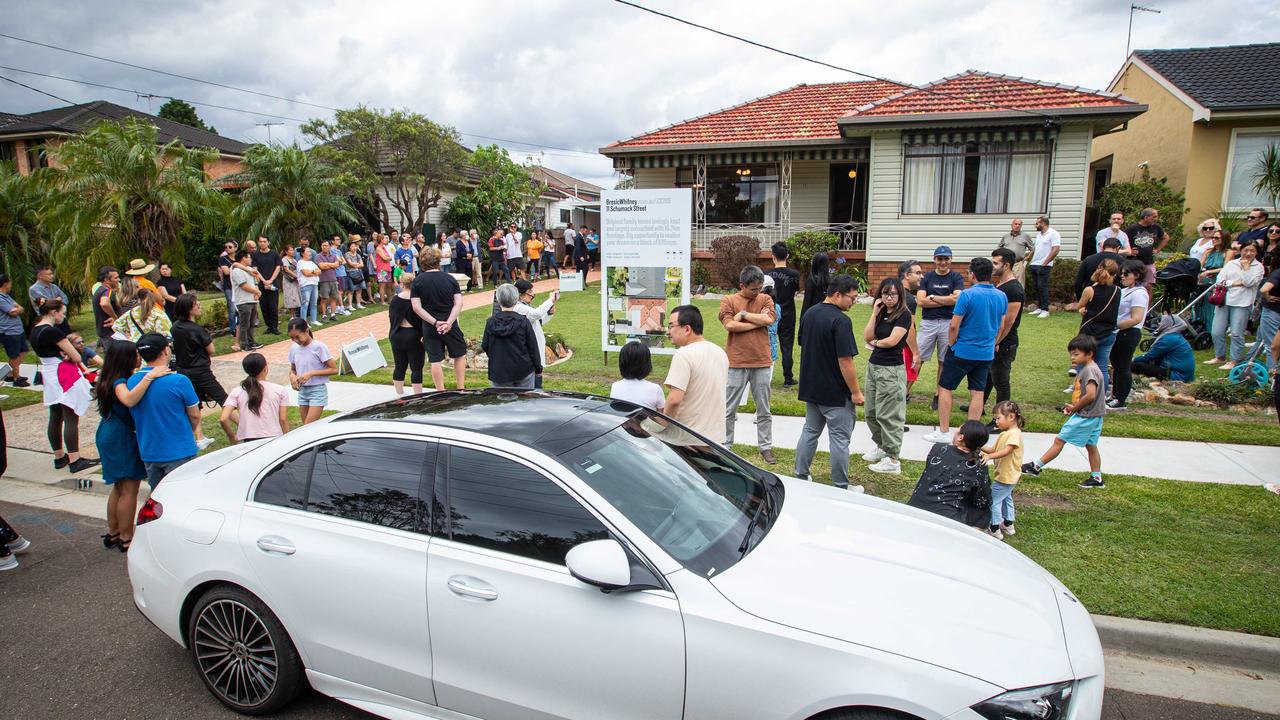
And the barks from the backyard have been ignored. Certainly it was the case in regards to ‘Gather Round’.
But Himmelberg’s departure will raise the alarm to a new level. Here’s why.
As much as some of the Victorian players leaving hurt, (and there is a long list of them) Himmelberg is from the Riverina part of New South Wales.
He’s from Mangoplah, population of 309. It’s one hour’s north of Albury. He played for the NSW-ACT under-18s. Eastlake in the NEAFL.
He’s a New South Wales’ poster boy. A homegrown star. The kind of player the AFL would love GWS to keep.
But the Giants have made him an offer and are sweating on his signature, amid strong interest from Richmond, Sydney Swans and St Kilda.
Tigers’ star Jacob Hopper was also from Leeton in the Riverina region, before moving to Ballarat to finish high school at St Patrick’s in Year 11 and 12.
So, if players from regional New South Wales like Himmelberg and Hopper are going to walk out on Greater Western Sydney, too, what chance does the club have?
Only one player was taken from New South Wales in the national draft last year – GWS academy player Harry Rowston – and there is an argument the Giants had to pay overs for him after the Swans placed an unexpected early bid.
The Giants could throw more money at Himmelberg, of course, just like they did to keep Kelly, Whitfield, and Coniglio.

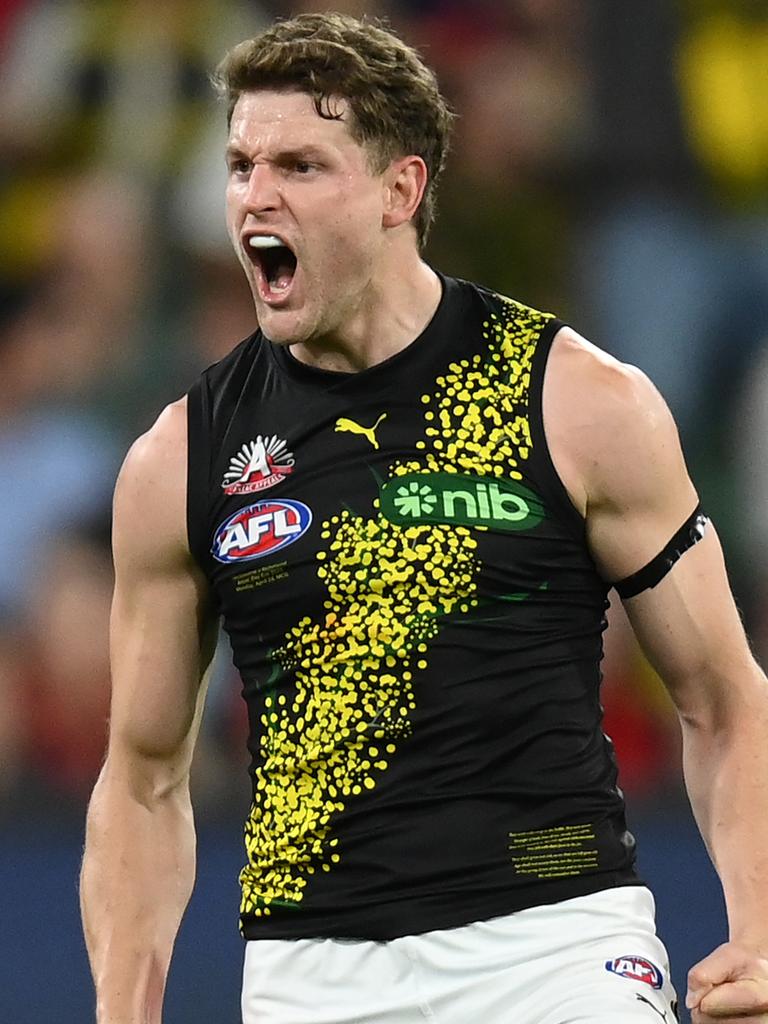
But therein lies the doom loop.
Every GWS player attracts an inflated bid from an interstate rival which the Giants need to match to keep them, blowing up the club’s cap, which has been at breaking point for years.
It’s why they parted with Jack Steele, Dylan Shiel, Adam Treloar, Taylor Adams and Devon Smith among others.
And why GWS paid plenty to keep No. 3 pick Callaghan on his freshly-inked deal and will do the same again to retain No. 1 pick Cadman.
The Giants had to pick Cadman because there was a chance Himmelberg would leave and Jesse Hogan is 28 years old. ‘The doom loop’
But this is where COLA seems like a no-brainer. As player managers say often, it costs significantly more to live and play in Sydney.
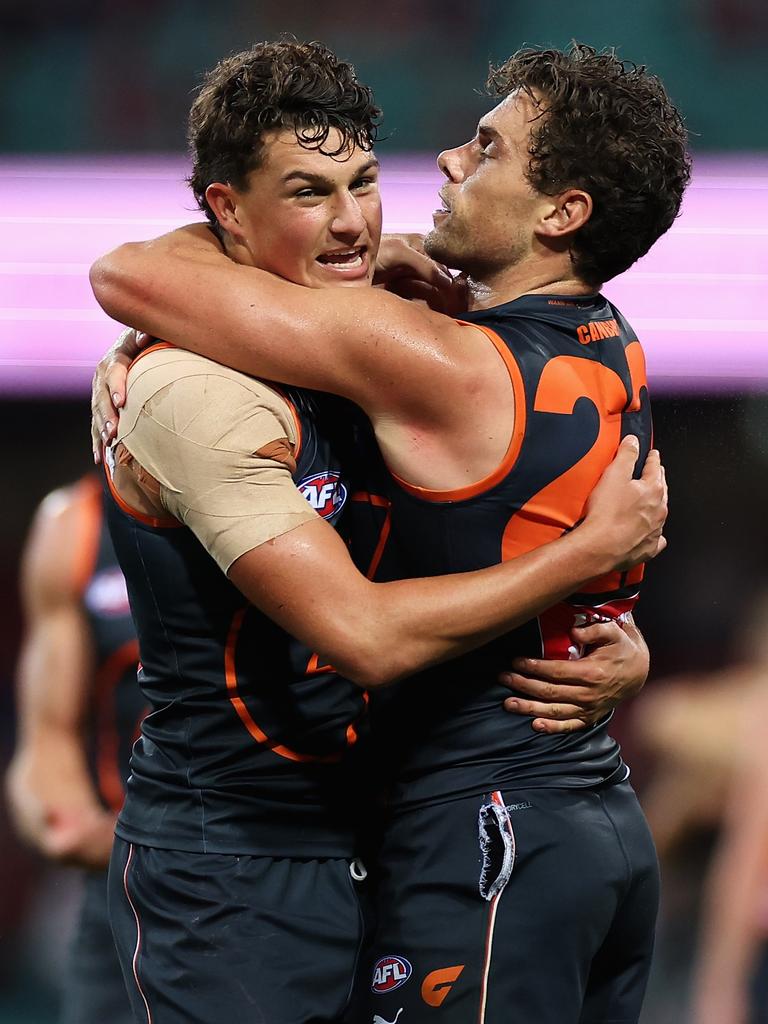
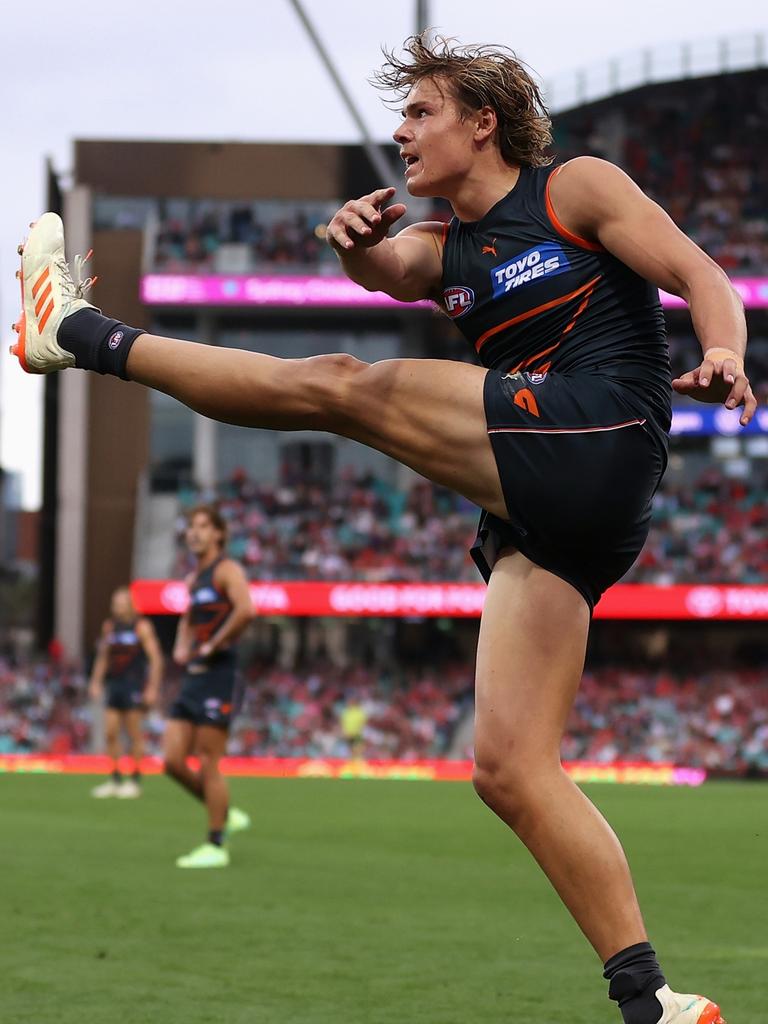
Property is more expensive to buy and rent.
According to the Core Logic property data from May, Sydney’s median house price is $1.25 million, compared to Melbourne’s $907,000.
Brisbane is $782,000. Adelaide $698,000. Hobart $692,000. Perth $599,000.
Coupled with recent interest rate rises, the financial realities for players and coaches put the two clubs at a significant disadvantage under the same salary cap.
Also, the crowds at GWS games have dwindled to worrying levels. The Giants have not posted a five-figure crowd at Giants’ Stadium since the 2019 elimination final.
In 2017, excluding the semi-final win over West Coast, the average attendance was 13,455.
But since the pandemic ended, attendances have halved. The Giants’ eight games at home from 2022 have averaged 6,809 people per game.
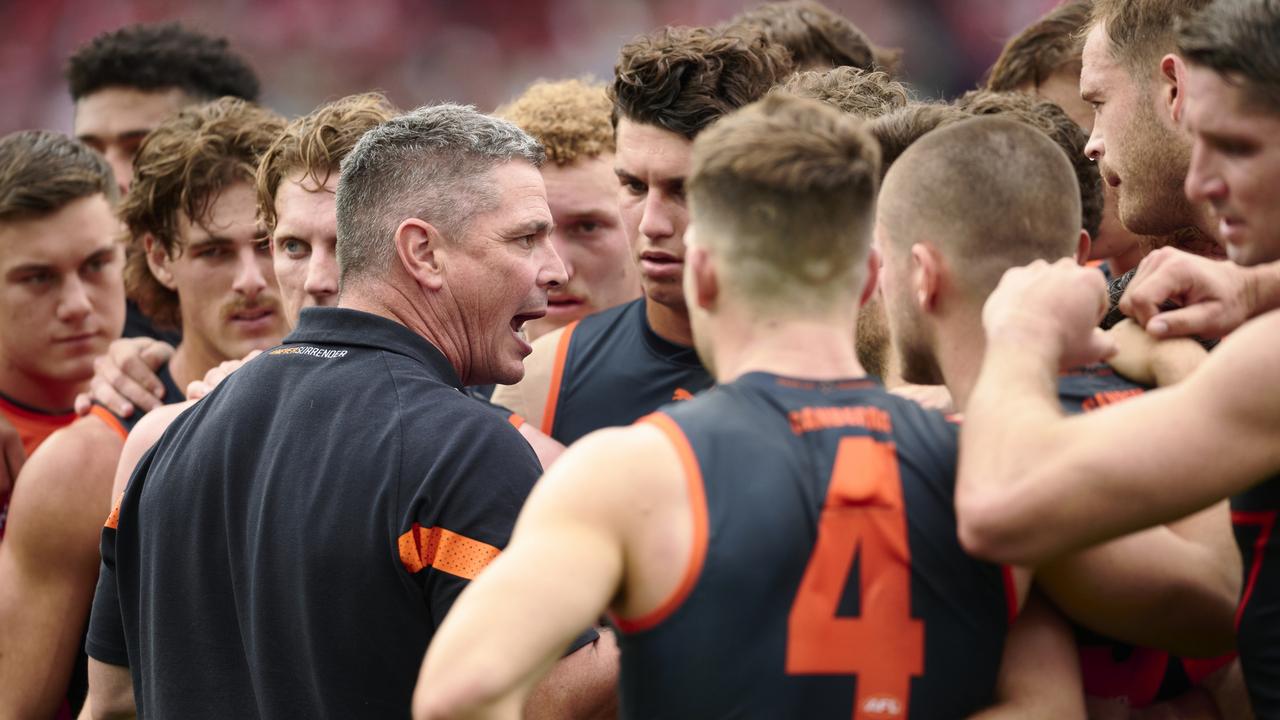
Friday night games are a rarity. The MCG is a special treat rather than a weekly ritual.
They are trying to build something under Toby Greene, onball star Green and coach Adam Kingsley.
There is high character at the Giants, and a country footy club feel which opens its doors. Some players like the anonymity.
But, broadly-speaking, no group of players have put their hands out over the journey more than the Giants (and perhaps the Gold Coast Suns) at contract time.
And last year one of the game’s highest-paid midfield groups had a stinker.
Hawthorn legend Leigh Matthews, one of the most respected figures in the game, put the Giants’ salary cap problems in perfect context when he said this bluntly about Kelly two years ago.
“I wouldn’t have thought Josh Kelly was a $1 million (a year) player,” Matthews said.
North Melbourne backed up the truck, again, and bled the Giants’ dry on the Kelly deal in 2021 which is worth $8 million over eight years.
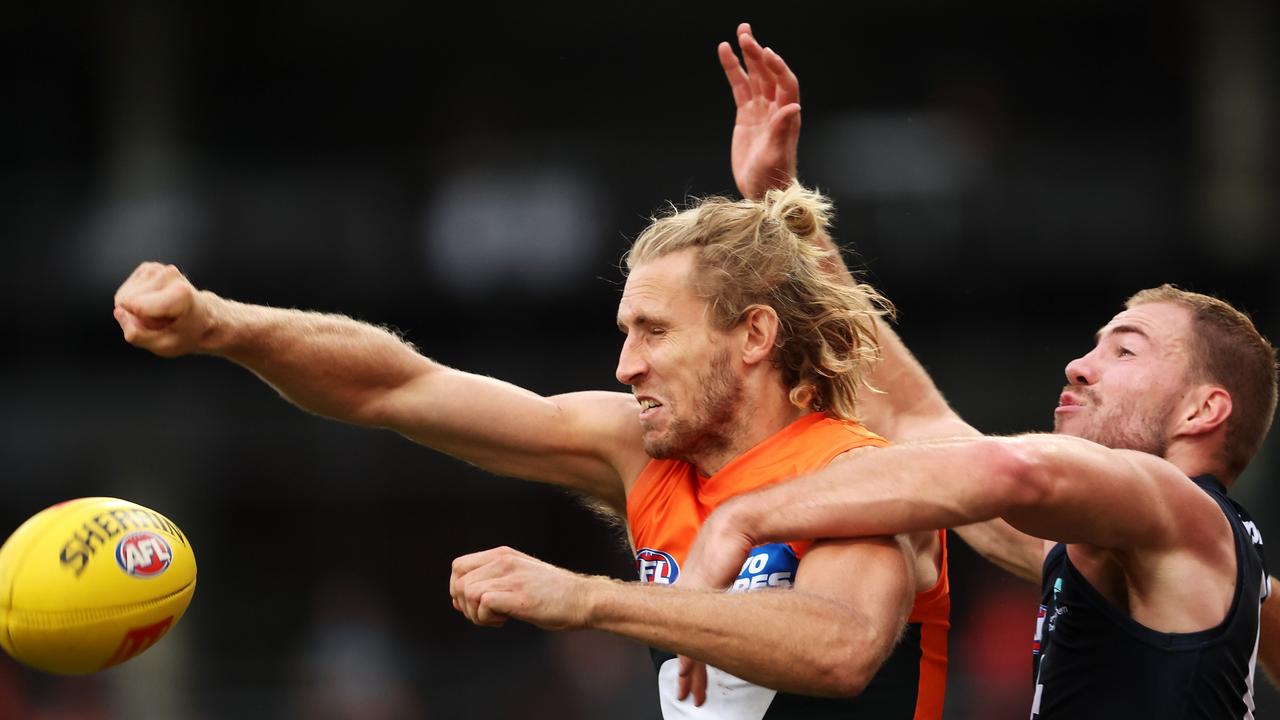
It does not expire for six more seasons.
Nick Haynes is on similar money this year as part of a heavily back-ended deal. Coniglio is up there. Whitfield too.
Greene is the one who genuinely deserves the big bucks, if he can keep his head together on the field as new captain.
But for so long this has not been real salary cap management. It’s been damage control.
The churn of players is enormous because the Victorian clubs keep coming for them and when it comes to free agency, who wants to head to Homebush?
A review of the Giants’ trade moves in recent years shows the club has had no real capacity to trade-in talent despite all the departures, because of the cap crisis.
In the last six years the club has traded-in only four players, and all on modest money.
There was ruck veteran Sam Jacobs, Jesse Hogan when no other club wanted him, big man Braydon Preuss and ex-Demon Toby Bedford.

Since COLA was abolished, the club has been handcuffed.
And if Himmelberg departs this year, they will have to pull a rabbit out of the hat to find a ready-made and versatile key position player to replace him.
Cadman is in his first year, Jake Riccardi is handy, and the forward line is all about the swarming forward pressure, anyway.
But perhaps Carlton free agent Jack Silvagni would be someone they would look at as a contingency as part of a selfless team role.
At the Blues, Silvagni won’t get much of a pay rise due to the club’s cap squeeze, and his team ethos and defensive attitudes would fit well at GWS.
But does he move fast enough for the ‘Orange Tsunami’?
GWS would be growing more nervous by the week about Himmelberg’s situation, and if he puts talks off until season’s end it would suggest he will walk.
So what has to change?
More salary cap will help, but club sources said the league would most likely create a new name for COLA, in a bid to avoid some of the blow-up which surrounded the issue a decade ago.

But influential figures in New South Wales are calling for a deeper review of the game to help stimulate some much-needed growth in New South Wales.
It will require more promotion out of the AFL’s expansion hub in Parramatta. More Sherrins in schools. More goalposts on ovals.
In the league’s annual report last year, the AFL said “Community football’s participation numbers remained steady, consolidating a 20 per cent growth in NSW and the ACT across the past five seasons.”
But has the needle really moved since the club’s inception in 2012? Doesn’t seem like it. Not that COVID-19, or last year’s devastating floods helped.
The club’s best friend is on-field success, because for all of the empty crowds and off-Broadway games, players who feel like they aren’t a chance to have a shot at a premiership will keep leaving.
To build the local talent, the club has called on the league to reassess some of its list access rules.
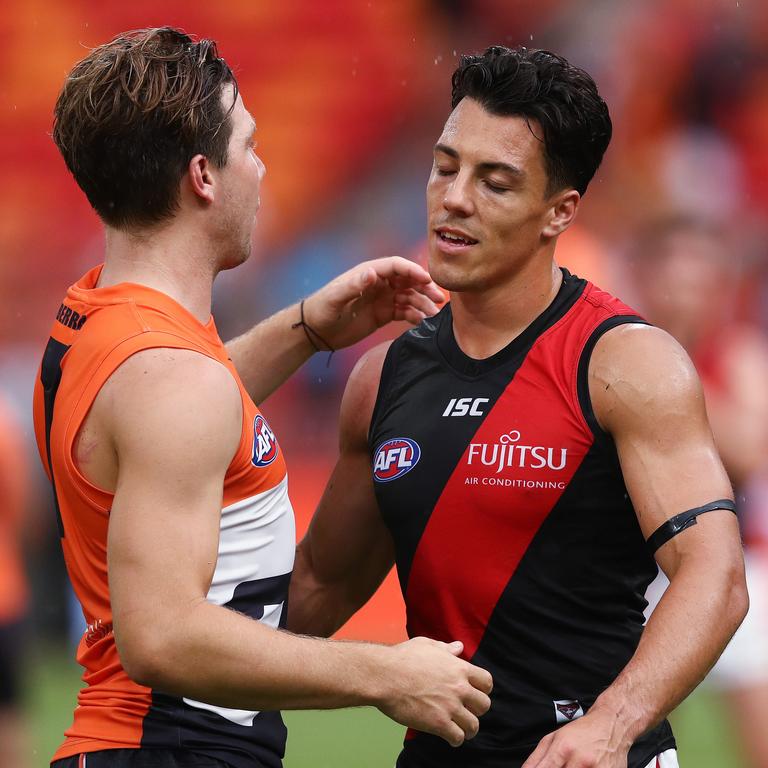
In 2017, the club was stripped of a huge part of its northern academy region along the Murray River from Albury to Wentworth, amid fears the Giants would be too good.
But since missing out in the 2019 grand final, they have been in decline.
They want the Murray River region back as part of a wider area which produced champions such as Wayne Carey, Paul Kelly and the Daniher brothers.
The academy gives GWS, and the three other northern states clubs, access to talented players from the area.
But the Murray River stretch was removed from the GWS zone because clubs thought they had been gifted too much in the start-up years.
Former Adelaide recruiting boss Matthew Rendell said the draft concessions were a “massive” leg-up which would trigger an extraordinary era of success for GWS and Gold Coast.
Rendell said the clubs would be “nigh unbeatable”.
“My estimate is that Western Sydney and Gold Coast will probably win 10 flags in-a-row between in 2015-2025,” Rendell said.
Not quite.
While the Suns have never even made the finals, the Giants’ window is closed for now. And the player retention issue, slightly ahead of the dwindling crowds, top the emergency issues.
Unless things change in New South Wales, it remains unclear which players will stay for reasonable money, and when the Giants’ window will reopen.
And how many fans will rock up to watch it.
More Coverage
Originally published as AFL Cap Space: Inside GWS’ salary cap disaster and why Harry Himmelberg’s decision is crucial




